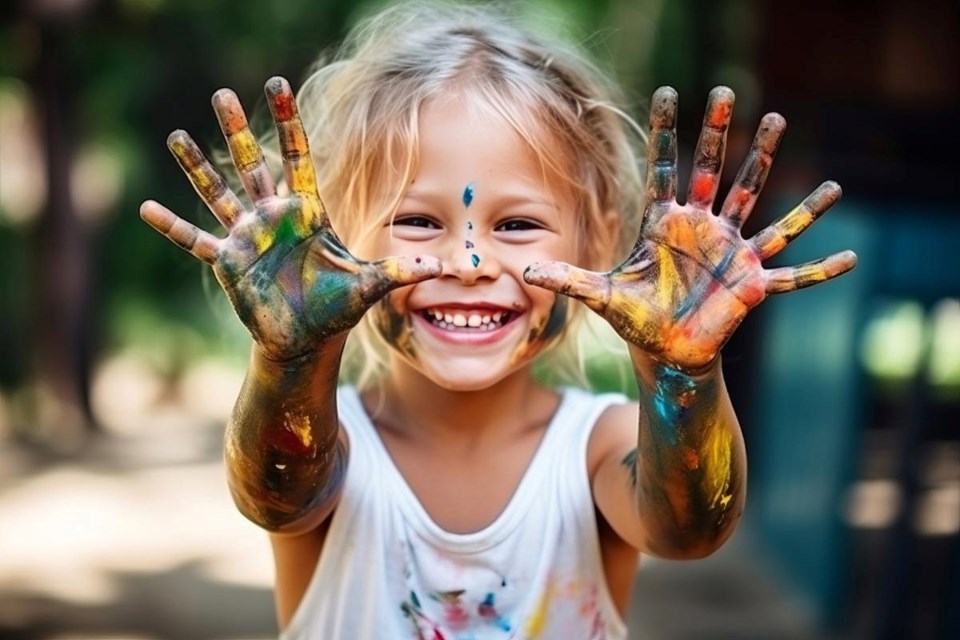MOOSEJAWTODAY.COM — Child-led learning and adult-directed focused learning are two educational practices that are compatible because they both focus on helping kids learn through play, an international educator says.
“Child-led learning is not the absence of teaching,”
“When teachers use play in their classrooms, they’re using the hardest way to teach (and) the most complex way of teaching because they’re juggling … many students who want to do different things.”
Teachers who do their jobs properly while promoting learning through play “are working really, really hard” because they’re responding to kids’ learning and gifting their pupils with knowledge, skills and the ability to navigate their play space, she continued.
“They’re also using explicit teaching methods to meet some of those curriculum demands as well,” the New Zealand-based educator stated.
For example, while there are several ways to teach children to read that are fun, playful, engaging and exciting, educators still lead the process because it’s their job, she said.
Yet, it’s also important that children direct their learning, which teachers can enable by creating spaces with resources and coming alongside to work with them.
“So they’re (teachers) not telling them what to do, but they’re helping them learn to be creative … (and) to be curious and problem-solvers,” Aiono stated.
Teachers who follow this philosophy do not sit back, check social media, order food, or kick up their feet, she added. Instead, they are “absolutely exhausted at the end of the week” and say — based on their comments to her — that they would never teach any other way.
Research reveals more
“True play is when kids are in charge,” said Aiono.
After decades of study — and recent confirmation from neuroscience — research confirms that play changes neurons and grows executive functioning skills, develops dexterity and physical strength, builds resilience or “grit,” creates long-term emotional memories, and builds social agility, Aiono said.
Furthermore, playing develops relationships, generates emotional regulation and creates new neurons after 30 minutes of play, she continued. This latter aspect is why school recess is so important: it reduces kids’ sedentariness.
“The brain has a ‘use it or lose it’ approach. The brain has to keep moving in order to wire up all these different neurons,” said Aiono. “And the more movement there is, the stronger those connections are.”
Play encourages kids to run, jump, roll and swing, which develop their balance, co-ordination, ability to catch a ball, hop on one foot or hold a pencil, she continued. These are also important pre-literacy skills.
Unfortunately, adults manage kids’ play so carefully that children don’t hurt themselves anymore, which, while it sounds good, prevents them from –°¿∂ ”∆µ equipped to manage injuries when they occur.
“Kids can manage tolerable stress because the brain needs it to develop long-term grit and perseverance … ,” Aiono said. “The more exposure there is to small stress, the more children can handle larger stress … and can feel good and build self-confidence.”
“Play is practice for real life,” she added.
Cognitive processes
Executive functioning is how humans use their frontal lobes to make decisions, navigate the world, and manage themselves, while these skills are crucial for learning, working and managing life, the New Zealand educator said.
In children, some of their core academic skills — like reading — can be affected by poor executive functioning processes. So, healthy executive functions can help kids critically analyze situations and determine whether what they’re seeing, reading, or hearing is real.
Being creative
Play can sometimes be confused with playing with toys, and while Lego, clay or Play-Doh are good resources with endless play possibilities, some of the best materials — like sticks and stones — are free, said Aiono.
This is why teachers should have “junk” in their classrooms since it offers kids more possibilities to be creative.
Society has different ideas about creativity, with many thinking of Vincent Van Gogh or Elon Musk as having “big C” creativity, she continued. This idea prevents people from doing anything imaginative because they don’t believe they can reach those heights.
Yet, there is also “little C” creativity, such as finding different uses for a product. For example, someone created the paperclip (big C), but another person uses it to pick a lock or open a phone (little C).
Aiono added that TV character MacGuyver is someone with little C creativity for his inventive uses of everyday items.
For more information, visit .




